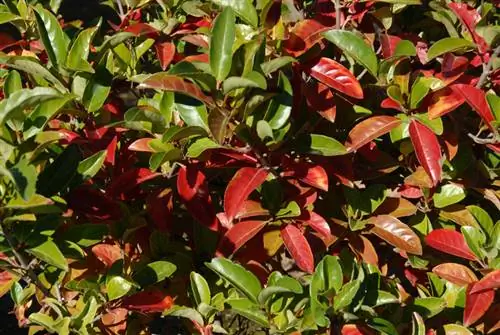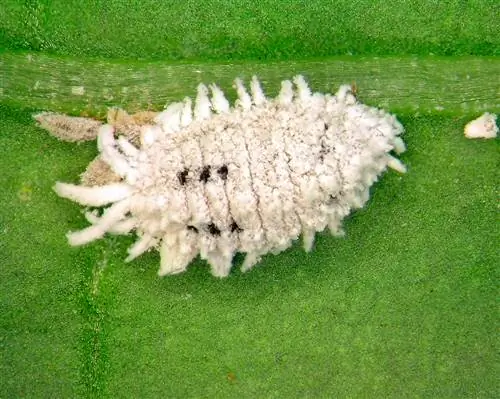- Author admin [email protected].
- Public 2023-12-16 16:46.
- Last modified 2025-01-23 11:20.
Although the oleander is native to the Mediterranean region and, as a Mediterranean plant, is used to dry times, the shrub is not a typical Mediterranean plant in one respect: it needs a lot of water, especially during the summer months, and should be watered regularly even in its winter quarters. It's all about the right amount, because if you water the oleander too much or too little, it will get dry leaves.

Why does my oleander have dry leaves?
Dry leaves on oleander can be caused by lack of water, root damage or frost damage. To counteract this, you should water the oleander regularly in summer and protect it from frost in its winter quarters. Affected leaves must be removed.
Oleander needs a lot of water - even in winter
In its natural habitat, you can find oleander near rivers and streams that often dry out in summer. However, the shrub can develop immensely long roots so that it can draw on groundwater during the dry months - the hard leaves do not store water. Of course, this is not possible in oleanders grown in pots, which is why they have to be watered regularly: several times a day on hot summer days, and about once a month during overwintering in the cold winter quarters. If possible, use stale tap water, not rainwater - the shrub needs lime.
Root damage can also be the cause
Brown, dry leaves do not necessarily mean a lack of water, but can also be due to too much water. Although this cause is rarer for oleander, as the plant usually has no problem with waterlogging (at least not in the summer months), it can occur, especially due to too frequent watering in the winter quarters, due to the lower root activity. The roots are so damaged that they turn brown and rot - and of course they can no longer supply the above-ground parts of the plant with sufficient water and nutrients: dry leaves and shoots are the result.
Dry leaves on oleander must be removed
In this case, you have to unpot the affected oleander, cut away all brown or rotten roots and replant the plant in a new container with fresh substrate. Remember that when pruning roots, the above-ground parts must also be cut back - in this case all dry leaves and shoots.
Tip
In addition to a lack of water, frost damage that occurs during overwintering is also a common cause of dry leaves on oleander. The Mediterranean plant is not hardy in our latitudes - even if short-term temperatures of up to minus five degrees Celsius are usually not a problem. These dry leaves should also be removed as they will not turn green again.






